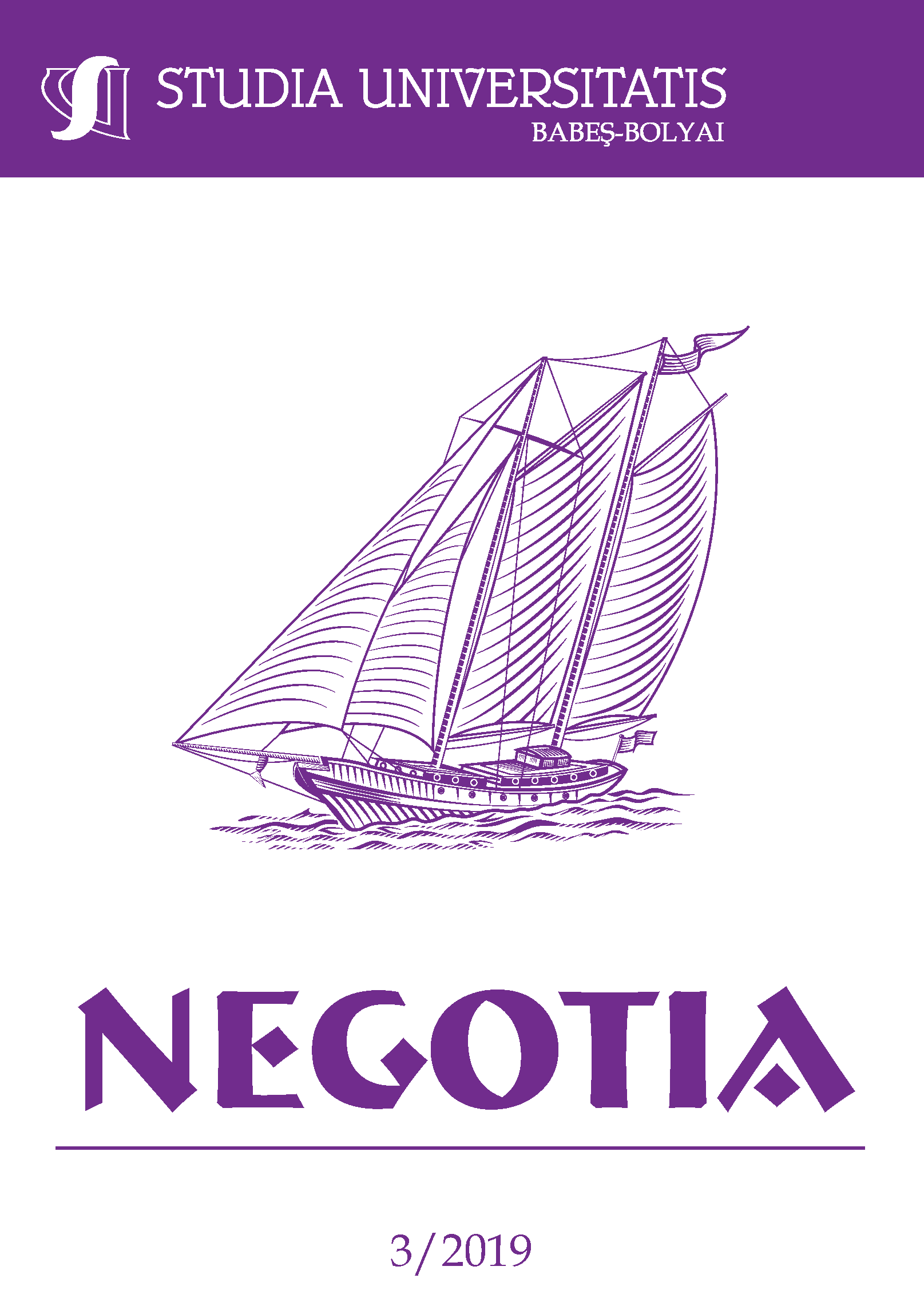THE END PRODUCT OF THE IMAGINE DRAGONS’ AND LADY GAGA’S MUSIC, OR THE NATURE OF MARKETING MIX IN THE MUSIC INDUSTRY
DOI:
https://doi.org/10.24193/subbnegotia.2019.3.03Keywords:
music, marketing-mix, Imagine Dragons, Lady Gaga, end product, personalization.Abstract
It is a fact that consumer behaviour changes according to the decisive events that occur in people's lives. More precisely, they buy different products or services when events such as marriage, childbirth or the loss of a family member occur. Music, on the other hand, is a service product which use does not change depending on what events occur in people's lives. In fact, there are songs that are required at weddings, christenings and funerals. This article examines first of all (a) what defines the songs of Imagine Dragons and Lady Gaga, more specifically (1) the source of their emotions in their songs, (2) what these songs provide beyond emotions and how these things materialize, (3) what they convey to society, as well as (b) how marketing mix elements are represented in the music industry.
JEL classification: M31
References
Blacking, J. (1981), “Making artistic popular music: the goal of true folk”, Popular Music, Vol. 1, pp. 9-14, available at: https://www.cambridge.org/core/journals/popular-music/article/making-artistic-popular-music-the-goal-of-true-folk/368879B99E6610550CCCE2C693DB66F1
Bruner, G. C. II (1990), “Music, Mood, and Marketing”, Journal of Marketing, Vol. 54 No. 4, pp. 94-104, available at: https://journals.sagepub.com/doi/abs/10.1177/002224299005400408
Chamorro-Premuzic, T. and Furnham, A. (2007), “Personality and music: Can traits explain how people use music in everyday life?”, British Journal of Psychology, Vol. 98 No. 2, pp. 175-185
Hays, T. (2005), “Well-being in later life through music”, Australasian Journal on Ageing, Vol. 24 No. 1, pp. 28-32
Hays, T. and Minichiello, V. (2005), “The meaning of music in the lives of older people: a qualitative study”, Psychology of Music, Vol. 33 No 4, pp. 437-451, available at: https://journals.sagepub.com/doi/abs/10.1177/0305735605056160
Kiss, B. (2012), “Abjekció és kiborg-identitás Lady Gaga művészetében”, [Abjection and Cyborg Identity in Lady Gaga’s Artwork], Tömegkultúra és pszichoanalízis, Vol. 2 No. 4, pp. 39-46, available at: https://www.academia.edu/8301194/Abjekci%C3%B3_%C3%A9s_kiborg-identit%C3%A1s_Lady_Gaga_m%C5%B1v%C3%A9szet%C3%A9ben
North, A. C., Hargreaves, D. J. and O’Neill, S. A. (2000), “The importance of music to adolescents”, British Journal of Educational Psychology, Vol. 70 No. 2, pp. 255-272
North, A. C., Hargreaves, D. J. and Hargreaves, J. J. (2004), “Uses of Music in Everyday Life”, Music Perception: An Interdisciplinary Journal, Vol. 22 No. 1, pp. 41-77
Rentfrow, P. J. and Gosling, S. D. (2006), “Message in a Ballad: The Role of Music Preferences in Interpersonal Perception”, Psychological Science, Vol. 17 No. 3, pp. 236-242, available at: https://journals.sagepub.com/doi/abs/10.1111/j.1467-9280.2006.01691.x
Ruud, E. (2008), “Music in therapy: Increasing possibilities for action”, Music and Arts in Action, Vol.1 No. 1, pp. 46-60, available at: https://core.ac.uk/download/pdf/12826296.pdf
Street, J., Hague, S. and Savigny, H. (2008), “Playing to the Crowd: The Role of Music and Musicians in Political Participation”, The British Journal of Politics and International Relations, Vol. 10 No. 2, pp. 269-285
Vorzsák Á., Szegő J. and Juhász M. A. (2005), Szolgáltatásmarketing, [Service-marketing], Alma Mater Publisher, Kolozsvár
Wallis, C. (2011), “Performing Gender: A Content Analysis of Gender Display in Music Videos”, Sex Roles, Vol. 64 No. 3-4, pp. 160-172, available at: https://link.springer.com/article/10.1007/s11199-010-9814-2
Data collected: using Google's web search engine (accessed time interval: 10. 03. 2019 – 28. 08. 2019):
https://asszertivakademia.hu/erzesek-listaja/
https://kozepsuli.hu/5-dolog-amit-tudnod-kell-az-imagine-dragons-zenekarrol/
https://hu.wikipedia.org/wiki/Imagine_Dragons
https://starity.hu/magazin/58331-9-erdekesseg-amit-nem-tudtal-az-imagine-dragons-zenekarrol/
https://hu.wikipedia.org/wiki/Lady_Gaga
Ivánczi, N. (2018), “Natural: Friss dallal jelentkezett az Imagine Dragons”, [Natural: The Imagine Dragons Has Launched a New Song], available at: https://shortscore.net/2018/07/18/natural-friss-dallal-jelentkezett-az-imagine-dragons
Horváth, E. (2015), “Az öngyilkosok himnusza volt a Szomorú vasárnap”, [Gloomy Sunday Was a Suicide Anthem], available at: https://www.szeretlekmagyarorszag.hu/az-ongyilkosok-himnusza-volt-a-szomoru-vasarnap/
https://retrolegends.hu/2013/12/10/szomoru-vasarnap-a-gyilkos-dal/
https://starity.hu/sztarok/lady-gaga/eletrajz/
https://antropos.hu/imagine-dragons-alternative-rock-nevadabol/
https://www.looktothestars.org/celebrity/imagine-dragons
YouTube video-sharing website – 21.08.2019
ProTV: “ProTV News” – TV program, 2019
Downloads
Published
How to Cite
Issue
Section
License
Copyright (c) 2019 Studia Universitatis Babeș-Bolyai Negotia

This work is licensed under a Creative Commons Attribution-NonCommercial-NoDerivatives 4.0 International License.






